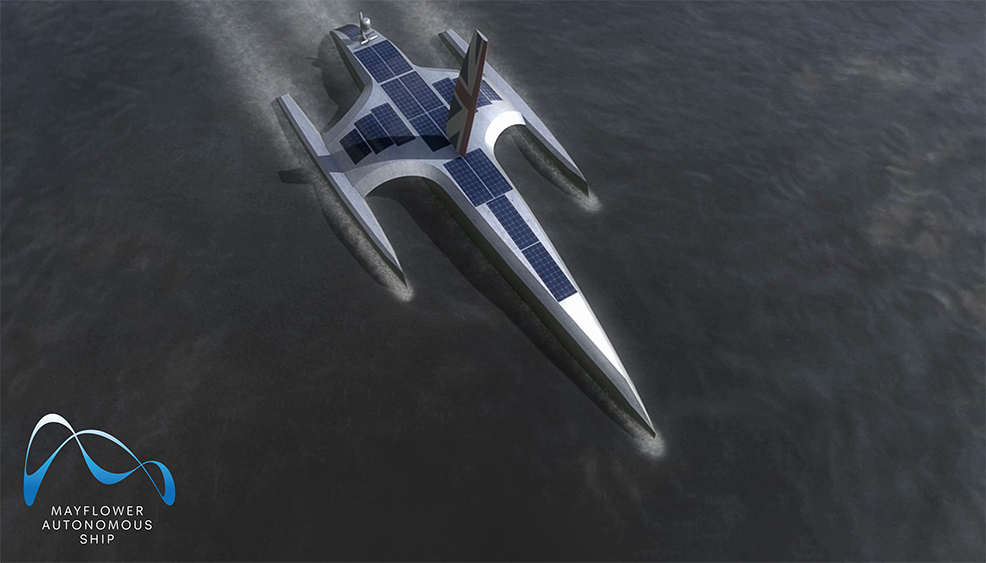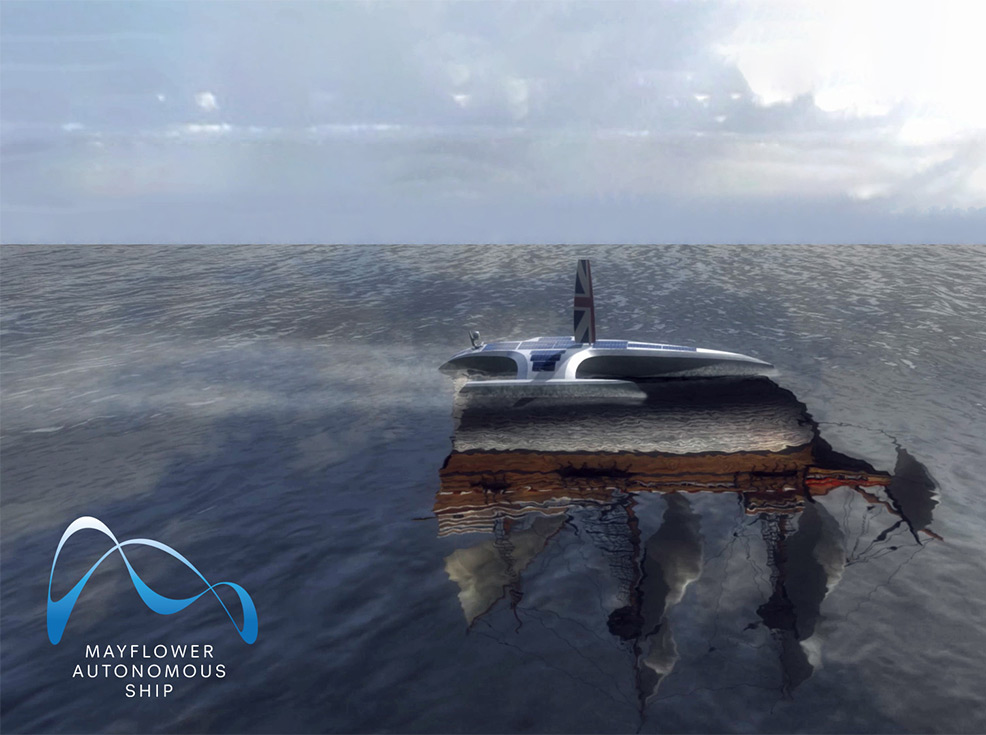
18th October 2019 Autonomous ship to cross the Atlantic next year Marine research organisation ProMare and its global consortium of partners are building an unmanned, fully-autonomous ship that will cross the Atlantic Ocean in September 2020, on the fourth centenary of the original Mayflower voyage.
The Mayflower Autonomous Ship (MAS) will use AI developed by IBM, along with powerful servers, cloud and edge computing technologies to navigate autonomously and avoid ocean hazards as it makes its way from Plymouth, England to Plymouth, Massachusetts. If successful, it could open the door to a new era of large, autonomous research ships. "Putting a research ship to sea can cost tens of thousands of dollars or pounds a day and is limited by how much time people can spend onboard – a prohibitive factor for many of today's marine scientific missions," said Brett Phaneuf, Founding Board Member of ProMare and Co-Director of the MAS project. "With this project, we are pioneering a cost-effective and flexible platform for gathering data that will help safeguard the health of the ocean and the industries it supports." "IBM helped put man on the moon and is excited by the challenge of using advanced technologies to cross and research our deepest oceans," said Andy Stanford-Clark, Chief Technology Officer, IBM UK & Ireland. "By providing the brains for the Mayflower Autonomous Ship, we are pushing the boundaries of science and autonomous technologies to address critical environmental issues." The vessel will carry three research pods containing an array of sensors and scientific instrumentation that researchers will use to advance understanding in a number of vital areas – such as maritime cybersecurity, marine mammal monitoring, sea level mapping and ocean plastics. The work will be coordinated by the University of Plymouth, UK, who are at the forefront of marine and maritime research, with support from IBM and ProMare.
The University of Plymouth hopes to improve our understanding of microplastics – analysing water samples from the MAS as it sails across the Atlantic to learn more about the origin, distribution and potential impact of these tiny fragments in the ocean. According to Professor Richard Thompson, OBE, Director of the Marine Institute at the University of Plymouth, "microplastics present a substantial challenge to our oceans. Over 700 species come into contact with marine litter which is found from the poles to the equator, and estimates are that the quantity of plastic in the oceans will triple in the decade to 2025. The Mayflower Autonomous Ship gives us the opportunity to rethink how to collect data and further our understanding of this global issue." Another collaborator – the UK's University of Birmingham – will use virtual, augmented and mixed reality technologies in the MAS to allow school children and members of the public around the world to experience the transatlantic mission.
By pairing IBM PowerAI Vision with IBM Power Systems accelerated servers (the same technology used by the most powerful supercomputers), IBM is helping to build deep learning models, capable of recognising navigation hazards which come into view of MAS's on-board cameras. Trained on real data and images from the Plymouth Sound in the UK, MAS will be capable of recognising hazards such as buoys, debris, and other ships and will have constant situational awareness thanks to RADAR, AIS (Automated Identification Systems) and LIDAR – the same technology used in autonomous cars. When a hazard is detected, MAS will use IBM's Operational Decision Manager software to decide whether to change course or, in case of emergencies, speed out of the way drawing additional power from its on-board back-up generator. Combining data from nautical maps, sensors and weather forecasts, MAS will determine the optimal path and speed it should take across the Atlantic. During the two-week voyage, edge computing devices will collect and analyse ship data and store it locally. When connectivity is available, it will be uploaded to edge nodes located onshore. ProMare and IBM experts will update the deep learning models and push them out to the ship as required. Project co-director, Brett Phaneuf, has family roots in the area where the original Mayflower landed on America's east coast, dating back to 1628. He was inspired by his family history and the stories he heard while growing up in New England. But he wasn't interested in building a simple replica of the ship. "Nothing really was going to do it justice," Mr Phaneuf says when asked about this. "My immediate interest is in autonomy, and we needed something that would speak to the next 400 years."
Comments »
If you enjoyed this article, please consider sharing it:
|









